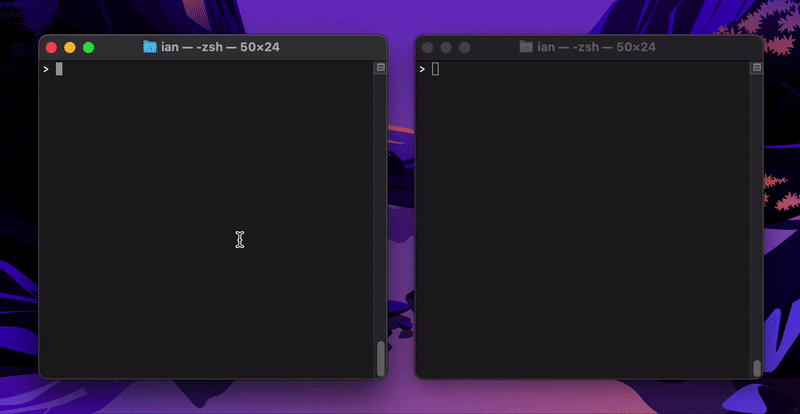Hi,
I am trying to make a POC with iamlive, it seems that somehow iamlive proxy results in aws cli hanging on most of the operations.
I have set up env variables as per documentation; iamlive seems to correctly intercept calls:
 However, the terminal with aws command hangs without any output. So I have run it with debug mode. It seems to be requests stops at and retries:
However, the terminal with aws command hangs without any output. So I have run it with debug mode. It seems to be requests stops at and retries:
2022-03-08 22:49:04,436 - MainThread - urllib3.connectionpool - DEBUG - Starting new HTTPS connection (3): s3.eu-central-1.amazonaws.com:443
Full logs below:
GET
/
host:s3.eu-central-1.amazonaws.com
x-amz-content-sha256:/hidden/
x-amz-date:20220308T204904Z
host;x-amz-content-sha256;x-amz-date
/hidden/
2022-03-08 22:49:04,434 - MainThread - botocore.auth - DEBUG - StringToSign:
AWS4-HMAC-SHA256
20220308T204904Z
20220308/eu-central-1/s3/aws4_request
/hidden/
2022-03-08 22:49:04,436 - MainThread - botocore.auth - DEBUG - Signature:
/hidden/
2022-03-08 22:49:04,436 - MainThread - botocore.endpoint - DEBUG - Sending http request: <AWSPreparedRequest stream_output=False, method=GET, url=https://s3.eu-central-1.amazonaws.com/, headers={'User-Agent': b'aws-cli/2.4.18 Python/3.8.8 Windows/10 exe/AMD64 prompt/off command/s3api.list-buckets', 'X-Amz-Date': b'20220308T204904Z', 'X-Amz-Content-SHA256': /hidden/', 'Authorization': b'AWS4-HMAC-SHA256 Credential=/hidden//20220308/eu-central-1/s3/aws4_request, SignedHeaders=host;x-amz-content-sha256;x-amz-date, Signature=/hidden/'}>
2022-03-08 22:49:04,436 - MainThread - urllib3.connectionpool - DEBUG - Starting new HTTPS connection (3): s3.eu-central-1.amazonaws.com:443
2022-03-08 22:50:07,102 - MainThread - botocore.hooks - DEBUG - Event needs-retry.s3.ListBuckets: calling handler <bound method RetryHandler.needs_retry of <botocore.retries.standard.RetryHandler object at 0x0000028AD3E5FB50>>
2022-03-08 22:56:00,193 - MainThread - botocore.retries.standard - DEBUG - Max attempts of 3 reached.
2022-03-08 22:56:00,224 - MainThread - botocore.retries.standard - DEBUG - Not retrying request.
2022-03-08 22:56:00,225 - MainThread - botocore.hooks - DEBUG - Event needs-retry.s3.ListBuckets: calling handler <bound method S3RegionRedirector.redirect_from_error of <botocore.utils.S3RegionRedirector object at 0x0000028AD3E5FBB0>>
2022-03-08 22:56:00,225 - MainThread - awscli.clidriver - DEBUG - Exception caught in main()
Traceback (most recent call last):
File "urllib3\connectionpool.py", line 449, in _make_request
File "<string>", line 3, in raise_from
File "urllib3\connectionpool.py", line 444, in _make_request
File "http\client.py", line 1347, in getresponse
File "http\client.py", line 307, in begin
File "http\client.py", line 268, in _read_status
File "socket.py", line 669, in readinto
File "ssl.py", line 1241, in recv_into
File "ssl.py", line 1099, in read
socket.timeout: The read operation timed out
During handling of the above exception, another exception occurred:
Traceback (most recent call last):
File "awscli\botocore\httpsession.py", line 344, in send
File "urllib3\connectionpool.py", line 785, in urlopen
File "urllib3\util\retry.py", line 525, in increment
File "urllib3\packages\six.py", line 770, in reraise
File "urllib3\connectionpool.py", line 703, in urlopen
File "urllib3\connectionpool.py", line 451, in _make_request
File "urllib3\connectionpool.py", line 340, in _raise_timeout
urllib3.exceptions.ReadTimeoutError: AWSHTTPSConnectionPool(host='s3.eu-central-1.amazonaws.com', port=443): Read timed out. (read timeout=60)
During handling of the above exception, another exception occurred:
Traceback (most recent call last):
File "awscli\clidriver.py", line 459, in main
File "awscli\clidriver.py", line 594, in __call__
File "awscli\clidriver.py", line 770, in __call__
File "awscli\clidriver.py", line 901, in invoke
File "awscli\clidriver.py", line 913, in _make_client_call
File "awscli\botocore\client.py", line 281, in _api_call
File "awscli\botocore\client.py", line 595, in _make_api_call
File "awscli\botocore\client.py", line 615, in _make_request
File "awscli\botocore\endpoint.py", line 102, in make_request
File "awscli\botocore\endpoint.py", line 156, in _send_request
File "awscli\botocore\endpoint.py", line 200, in _do_get_response
File "awscli\botocore\endpoint.py", line 269, in _send
File "awscli\botocore\httpsession.py", line 379, in send
botocore.exceptions.ReadTimeoutError: Read timeout on endpoint URL: "https://s3.eu-central-1.amazonaws.com/"
Read timeout on endpoint URL: "https://s3.eu-central-1.amazonaws.com/"
Command: aws s3api list-buckets
OS: Windows 11

 However, the terminal with aws command hangs without any output. So I have run it with debug mode. It seems to be requests stops at and retries:
However, the terminal with aws command hangs without any output. So I have run it with debug mode. It seems to be requests stops at and retries:






